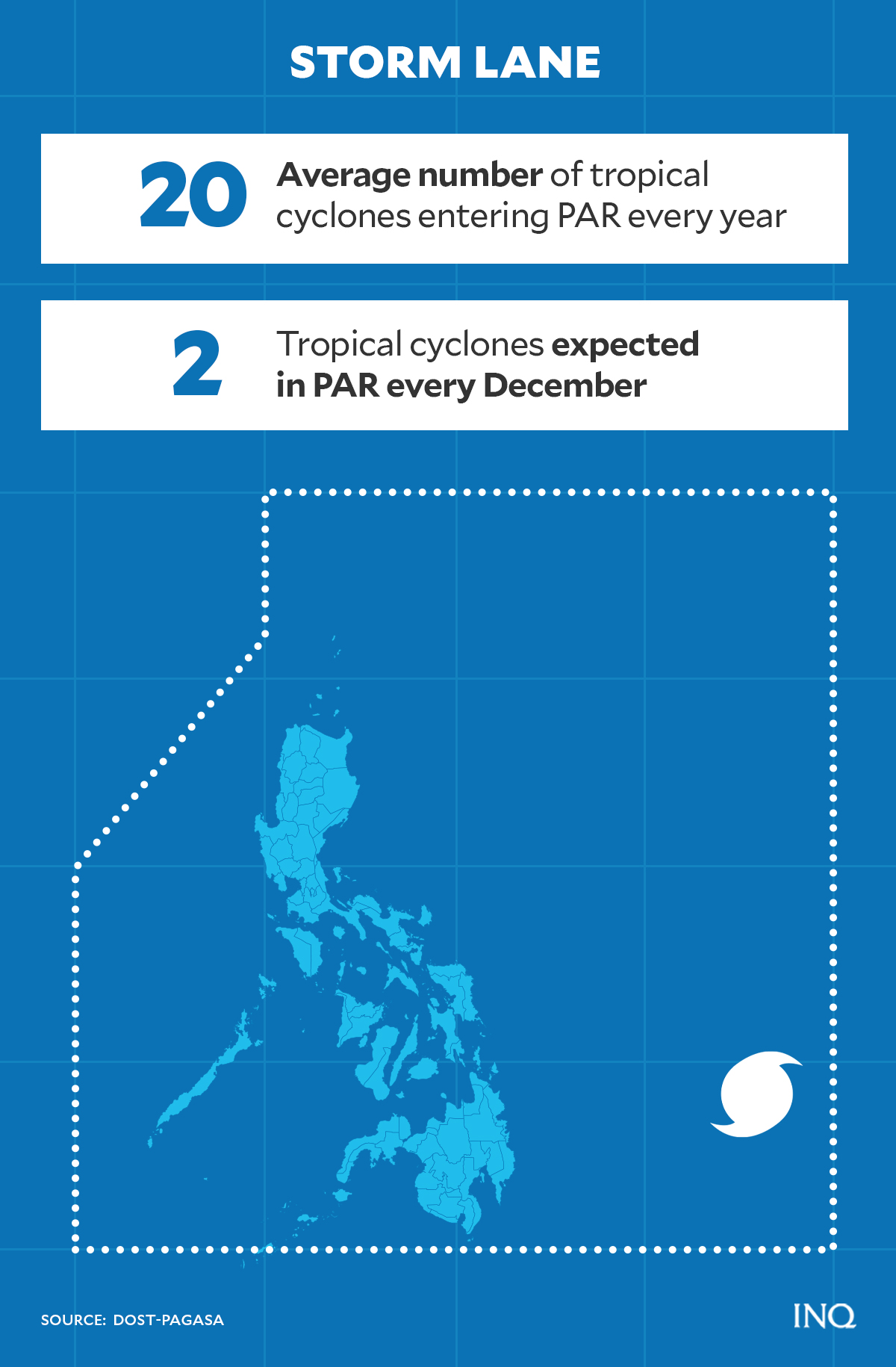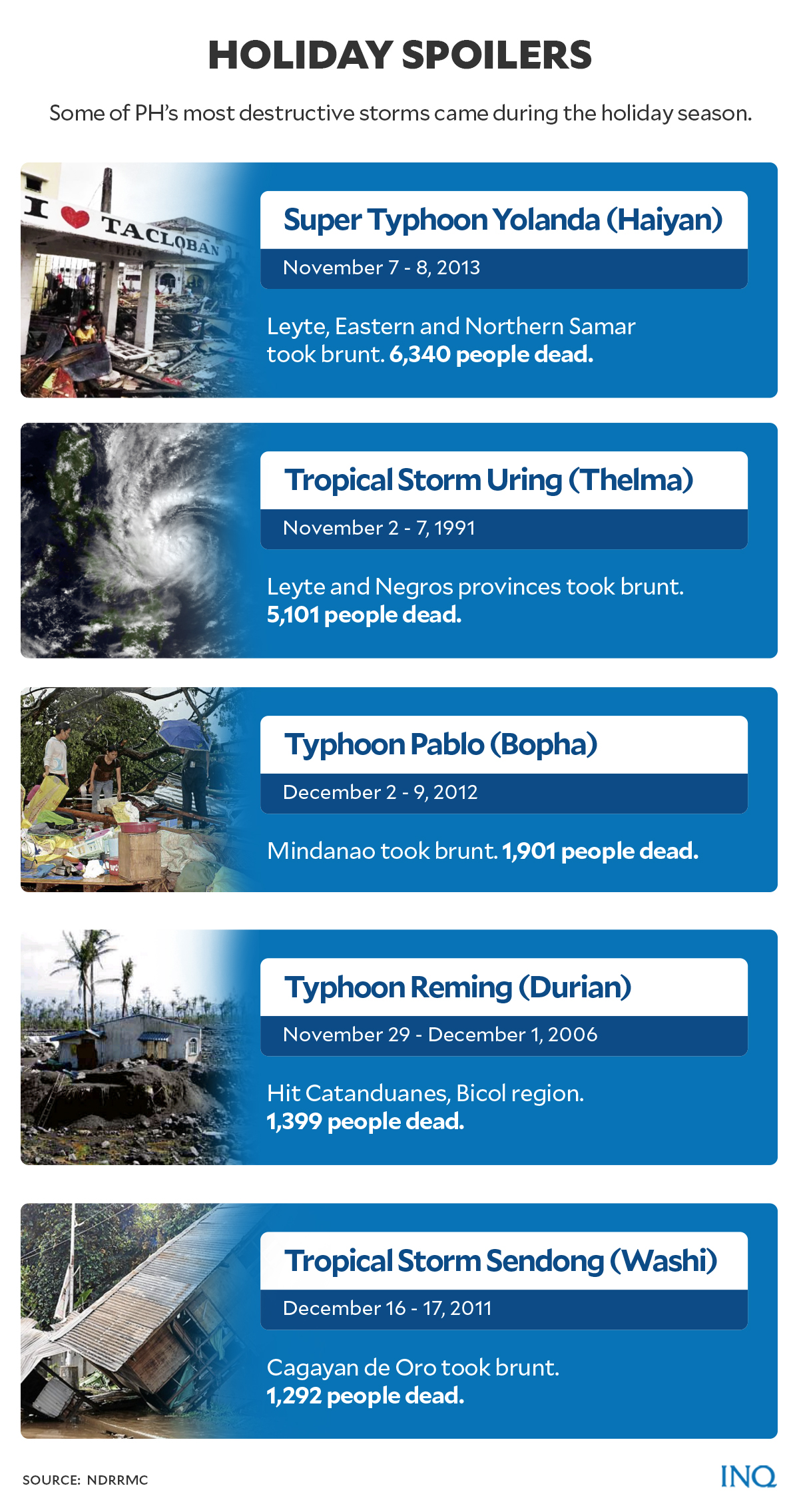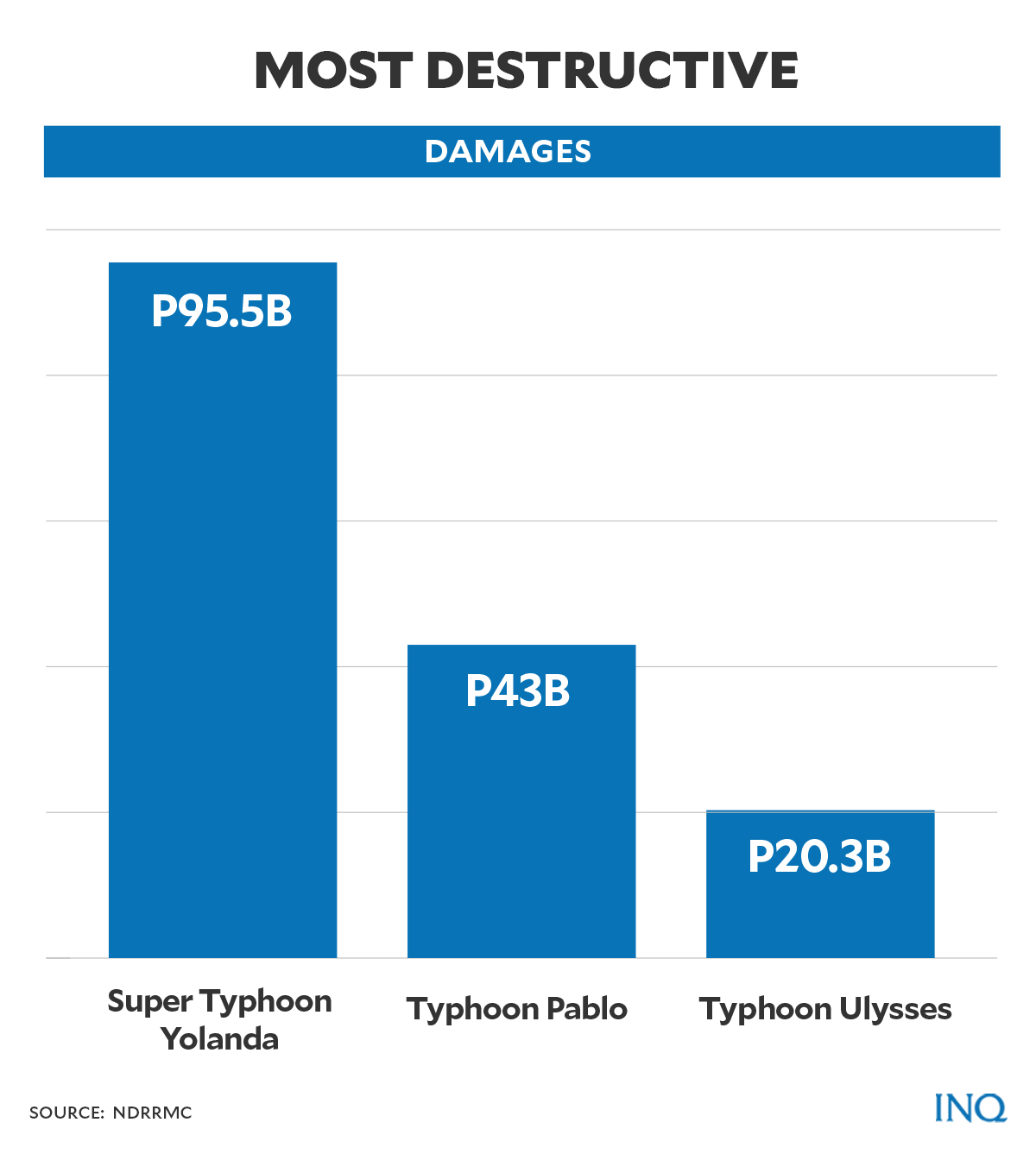Natural disasters know no holiday season in PH
MANILA, Philippines—The Philippines has been identified as one of the most disaster-prone countries in the world.
Sometimes, however, natural disasters—earthquakes, volcanic eruptions, typhoons, floods, droughts and landslides—occur when the country celebrates what is supposed to be the most joyous time of the year, Christmas.
In the Philippines, where at least 80 percent of the population consider themselves Catholics, Christmas is among the most important holidays.
Christmas in the Philippines has been described as fun, colorful and heartwarming—with traditions like midnight Masses, Christmas carols, Noche Buena and many more.
Through the years, however, natural disasters replace joy with gloom during the holidays, especially when these claim lives.
Article continues after this advertisementIn this article, INQUIRER.net looks back at some of the deadliest and devastating calamities that have hit the country during the Yuletide season.
Article continues after this advertisementHoliday typhoons
A study, recently published on the Tropical Cyclone Research and Review journal by the ESCAP/WMO Typhoon Committee (TC) and the Shanghai Typhoon Institute of the China Meteorology Administration (STI/CMA), said the Philippines is “one of the world’s natural hazard hot spots” and faces “more natural hazards” than other countries.
Every year, an average of 20 tropical cyclones enter the Philippine area of responsibility.
READ: Typhoons and COVID: How much more can PH take?
At least one or two tropical cyclones are expected to enter the country every December, said the Philippine Atmospheric, Geophysical, and Astronomical Services Administration (Pagasa).
“Tropical cyclones are warm-core low pressure systems associated with a spiral inflow of mass at the bottom level and spiral outflow at the top level,” Pagasa said.
“They always form over oceans where sea surface temperature, also air temperatures are greater than 26°C,” Pagasa explained.
“The air accumulates large amounts of sensible and latent heat as it spirals towards the center. It receives this heat from the sea and the exchange can occur rapidly, because of the large amount of spray thrown into the air by the wind,” it added.
“The energy of the tropical cyclone is thus derived from the massive liberation of the latent heat of condensation.”
Pagasa defined tropical cyclones as a non-frontal, synoptic-scale cyclone developing over tropical and sub-tropical waters at any level and having an organized circulation.
It is recognized as hurricanes in the North Atlantic, Eastern North Pacific and South Pacific Ocean; “willy-willy” in the eastern part of the Southern Indian Ocean; “cyclones” in the bay of Bengal, Arabian Sea and Western South Indian Ocean; and “typhoons” in the Western North Pacific Ocean.
The classification of tropical cyclones, according to strength of winds these carry, adopted by Pagasa are:
- Tropical Depression (TD): a tropical cyclone with maximum sustained winds of up to 61 kilometers per hour (kph) or less than 33 nautical miles per hour (knots).
- Tropical Storm (TS): a tropical cyclone with maximum wind speed of 62 to 88 kph or 34 to 47 knots.
- Severe Tropical Storm (STS): a tropical cyclone with maximum wind speed of 89 to 117 kph or 48 to 63 knots.
- Typhoon (TY): a tropical cyclone with maximum wind speed of 118 to 220 kph or 64 to 120 knots.
- Super Typhoon (STY): a tropical cyclone with maximum wind speed exceeding 220 kph or more than 120 knots.
In the past years, the Philippines was battered by deadly typhoons that came during the holiday season—November to January—and has claimed thousands of lives.
Some of these are:
- Super Typhoon “Yolanda” (“Haiyan”): Nov. 7-8, 2013; Leyte, Eastern and Northern Samar; 6,340 deaths
- Tropical Storm “Uring” (“Thelma”): Nov. 2-7, 1991; Leyte, Negros; 5,101 deaths (estimated up to 8,000)
- Typhoon “Pablo” (“Bopha”): Dec. 2-9, 2012; Mindanao; 1,901 deaths
- Tropical Depression “Winnie”: Visayas and Luzon; 1,593 deaths
- Typhoon “Reming” (“Durian”): Nov.29-Dec. 1, 2006; Catanduanes, Bicol region; 1,399 deaths
- Tropical Storm “Sendong” (“Washi”): Dec. 16-17, 2011; Cagayan de Oro ; 1,292 deaths
READ: IN THE KNOW: Deadliest typhoons in the Philippines
The most destructive tropical cyclones that have hit the Philippines during the holiday season were:
- Yolanda: P95.5 billion worth of damages
- Pablo: P43.2 billion worth of damages
- Ulysses: P20.3 billion worth of damages
Yuletide quakes
Aside from tropical cyclones, strong earthquakes have also rattled the country during the holiday season.
Some of the strong quakes that struck the Philippines between November to January in past years were:
- Jan. 1, 2001: magnitude 7.5; 33 km depth of focus; Philippine Sea near Tarragona, Davao Oriental
- Dec. 29, 2018: magnitude 7.2; 60 km depth of focus; Davao Gulf near Governor Generoso, Davao Oriental
- Dec. 15, 2019: magnitude 6.9; 9km depth of focus; Matanao, Davao del Sur; 13 confirmed deaths
- Dec. 25, 2020: magnitude 6.3; 107 km depth of focus; coast of Calatagan, Batangas
READ: 7.2-magnitude quake jolts sea off Davao
Stay safe and alert
Due to the country’s geographical position, disasters like earthquakes, floods, typhoons and volcanic eruptions are common.
To help Filipino families stay safe and prepared for emergencies this holiday season, the Unicef, National Nutrition Council and Makati Medical Center have issued some tips and guidelines.
READ: Celebrating the holidays safe from hazards, COVID-19
In case of emergencies or disasters, families should:
- Plan for every specific disaster.
- Identify the risks of accidents and injuries.
- Prepare an emergency kit or “Go Bag.”
- Wait for news, announcements, or weather reports during emergencies.
- Avoid going out unless absolutely necessary.
- Learn basic first aid.




